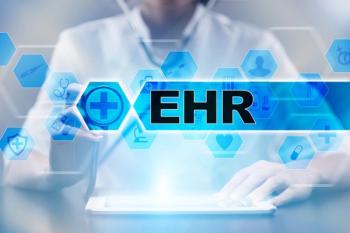
Empowering the health care workforce with connected data
Empowering the healthcare workforce is critical to not only improving employee retention and wellbeing, but also to delivering safer patient care.
With increasing technology demands, a growing patient population and workforce shortages, today’s healthcare staff are facing the unique challenges of the modern era. As a healthcare safety & quality executive and registered nurse, I’ve seen first-hand how challenging it can be to work on the frontline of patient care. Post-pandemic, recruiting and staff retention continue to be a challenge for hospitals and health systems, and burnout among clinicians is rampant. Health systems must focus on workforce optimization through evidence-based empowerment strategies and leveraging connected data and technology to improve working conditions and drive safer patient care.
The causes and effects of emotional exhaustion in healthcare
The
Strategies for workforce optimization
In 2022, the American Hospital Association (AHA) published the report, “
Supporting and building the team involves implementing programs to promote employee well-being and leveraging dynamic recruiting and staffing strategies. These are critical priorities for any hospital or health system in 2024 amid workforce shortages and rapid turnover.
The third—and perhaps most overlooked—strategic priority is data and technology. Data can help healthcare organizations identify workforce trends to make informed decisions about resourcing, staffing, recruiting and more. It can also help organizations identify their problem areas and implement data-backed solutions to reduce burnout and improve employee retention.
When it comes to implementing new technology, streamlining is key. Healthcare leaders should seek to adopt solutions that automate or accelerate administrative tasks rather than adding labor to staff’s plates. I’m sure that every doctor and nurse has had the experience of administrative demands eating into their time with patients. According to a
Bridging datasets for actionable insights
As the AHA report states, workforce empowerment requires actionable data—something that many healthcare organizations lack sufficient access to nationwide. Liberating data silos and connecting data from across the enterprise is key to unlocking operational insights.
Connecting operational processes and data arms care teams and leaders with actionable insights and analytics in real-time. The result is improved decision-making that enhances quality and outcomes across the organization—including bolstering workforce efficiency and patient safety. By analyzing data such as retention and recruiting trends, staffing levels across departments, incident reports and human resources data, healthcare organizations can identify the process and technology changes needed to optimize workflows and enhance employee well-being. Leveraging AI with connected data solutions can also enable healthcare organizations to automate processes such as workforce scheduling and incident reporting, or even predict patient demand to optimize scheduling and resource allocation.
Empowering the healthcare workforce is critical to not only improving employee retention and wellbeing, but also to delivering safer patient care. When staff can work efficiently and clinicians can practice at the top of their licenses, patients will reap the benefits with better outcomes. By connecting disparate systems, healthcare organizations can uncover the data insights they need to support safer and happier patients and staff, and a stronger, more financially sound organization.
Newsletter
Optimize your practice with the Physicians Practice newsletter, offering management pearls, leadership tips, and business strategies tailored for practice administrators and physicians of any specialty.










